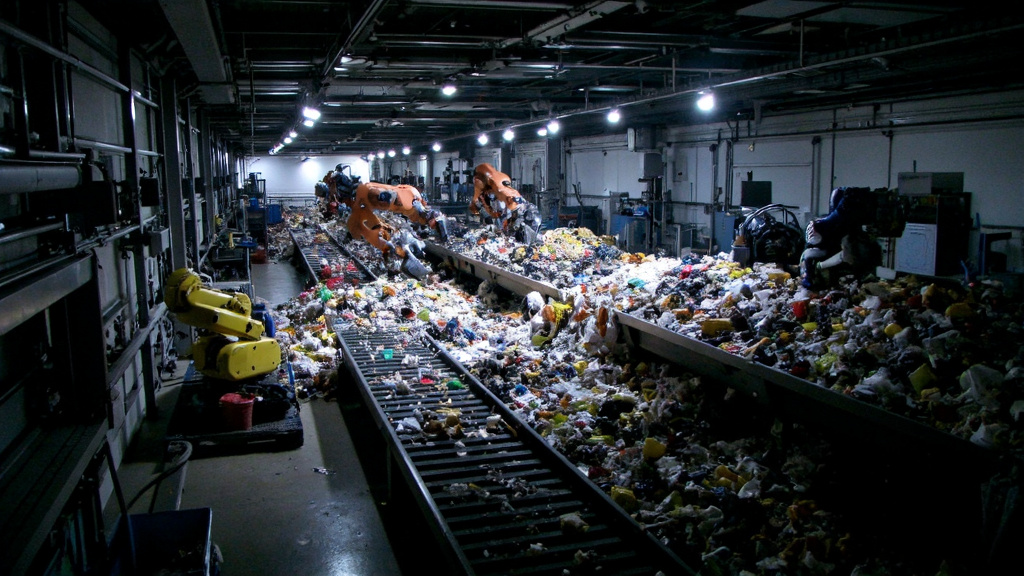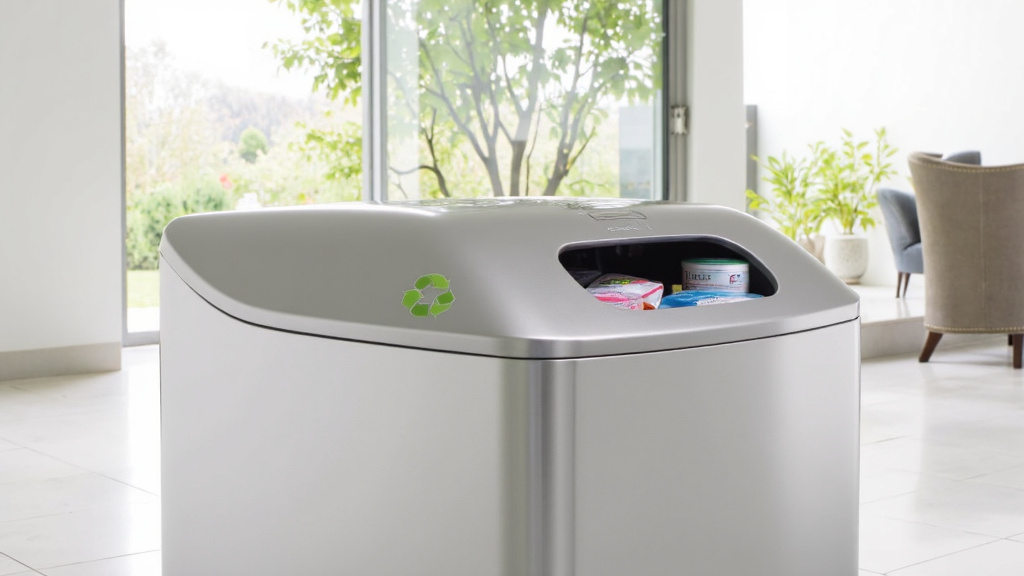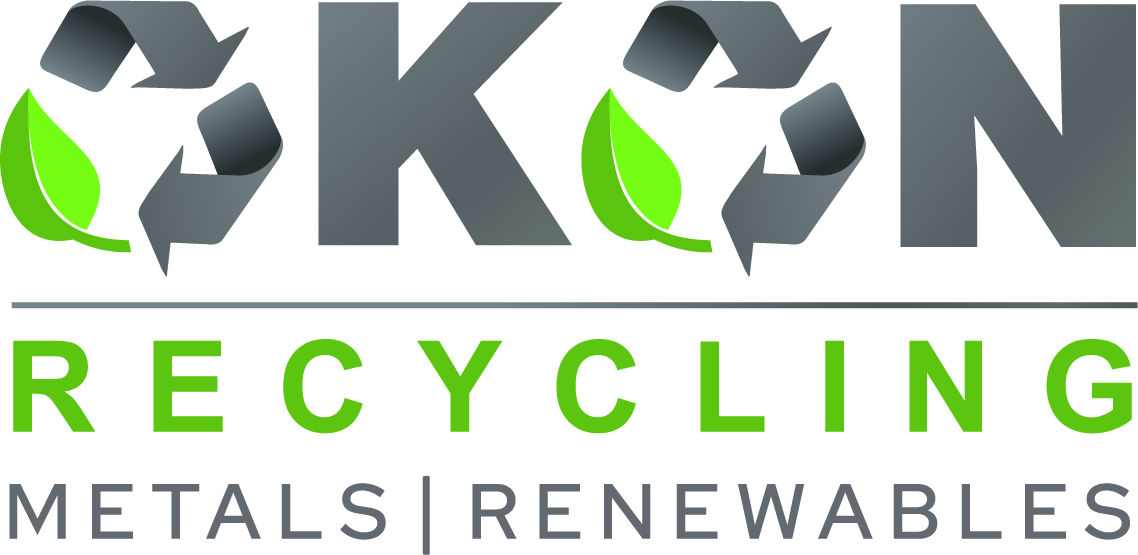5901 Botham Jean Blvd, Dallas, TX 75215
How to Identify Recyclable Materials: A Quick Guide
April 26, 2025Every day, we encounter the question of whether an item is recyclable. Standing at the bin with a package in hand, many of us hesitate. This common dilemma is a significant challenge in waste management today.
Properly identifying recyclable materials is crucial for sustainable waste management. Correctly sorting materials like paper, plastic, glass, and metal diverts valuable resources from landfills and reduces the need for raw material extraction. This simple act significantly cuts greenhouse gas emissions and conserves energy.
Identifying recyclables involves more than just looking for the recycling symbol. It requires understanding material composition, local recycling capabilities, and the technologies that enable material recovery. As global waste generation is projected to reach 3.4 billion metric tons by 2050, accurate identification becomes increasingly important.
What Are the Common Recyclable Materials?
Understanding which materials can be recycled is essential for effective waste management. Most recycling programs accept several primary categories of recyclable materials, each requiring specific handling and processing techniques to transform them into new products.
Paper Products
Paper products are among the most commonly recycled materials, including newspapers, office paper, magazines, and books. The recycling process involves collecting and sorting paper waste to remove contaminants. Clean paper products are shredded into small pieces and mixed with water to create a pulp. This pulp undergoes a cleansing process to remove inks and dyes before being dried and rolled into new paper products. Avoid recycling paper contaminated with food or grease.
Cardboard
Cardboard, specifically corrugated cardboard (OCC), is highly recyclable. Shipping boxes, packaging materials, and cereal boxes fall into this category. When recycling cardboard, remove any tape, labels, or other non-cardboard materials. Flatten your cardboard boxes to save space in recycling bins. Keep cardboard dry and free from food contamination to maintain its recyclability. Pizza boxes with grease stains should not be placed in recycling bins as oil contamination affects the recycling process.
Plastics
Plastic recycling can be complex due to the various types of plastic. Most recycling programs accept plastics labeled with resin identification codes 1 (PET) and 2 (HDPE). These include water bottles, milk jugs, detergent containers, and some food packaging. Before recycling plastic items, rinse them to remove food residue. Remove caps and lids as they may be made from different types of plastic. Some communities have expanded their plastic recycling capabilities to include codes 3 through 7, but this varies by location.
Glass
Glass bottles and jars are 100% recyclable and can be recycled endlessly without loss of quality. The glass recycling process involves crushing the glass into small pieces called cullet, which is then melted down to create new glass products. Different colored glass needs to be processed separately due to the unique additives and dyes used. Clear, green, and brown are the most common colors recycled. Rinse glass containers before recycling and remove any non-glass components like metal lids.
| Material | Characteristics | Recycling Benefits | Challenges |
|---|---|---|---|
| Paper | Includes newspapers, office paper, magazines | Reduces CO2 emissions, saves trees | Contamination with food/grease |
| Cardboard | Corrugated cardboard, cereal boxes | Recyclable and reusable | Contamination with food/grease |
| Plastics | Types 1 and 2 are commonly recycled | Conserves energy, reduces landfill use | Variety of plastic types |
| Glass | 100% recyclable, endless recycling | Maintains quality, reduces raw material use | Sorting by color required |
| Metals | Includes aluminum and steel | High recycling value, energy-efficient | Separation of different metals |
Metals
Metal recycling primarily focuses on aluminum and steel items. Aluminum cans, foil, and trays are highly valuable recyclable materials. Steel products like food cans, aerosol cans, and metal lids can also be recycled. Metal recycling involves shredding the items into small pieces and melting them down. The molten metal is then formed into new products. Using magnets in the sorting process helps separate steel from other recyclables, while eddy current separators help isolate aluminum.
Organic Materials
Many communities now offer composting programs for organic waste. Fruit and vegetable scraps, coffee grounds, eggshells, yard trimmings, and uncoated paper products can be composted. These materials break down naturally to create nutrient-rich soil amendments. Composting diverts a significant amount of waste from landfills while creating a valuable product for gardens and landscaping. Some composting programs may also accept biodegradable plates and utensils, though this varies by facility.
Electronic Waste
While not collected in standard recycling bins, electronic waste (e-waste) can and should be recycled through specialized programs. Computers, phones, televisions, and other electronic devices contain valuable materials that can be recovered. E-waste recycling helps prevent hazardous materials from entering landfills while recovering precious metals like gold, silver, and copper. Many retailers and local waste management facilities offer e-waste collection services.
What Advanced Technologies Are Used for Sorting Recyclables?

Today’s recycling facilities have evolved significantly from the manual sorting operations of the past. Advanced technologies now enable the identification and separation of materials with exceptional speed and accuracy. These innovations have transformed how recyclables are processed, greatly enhancing recovery rates and material purity.
Optical Sorting Systems: The “Eyes” of Modern Recycling
Optical sorters are the primary identification technology in advanced recycling facilities. Using high-resolution cameras and specialized sensors, these systems capture detailed images of materials moving along conveyor belts. The images are instantly analyzed to identify specific materials based on color, shape, and texture.
Once identified, the system triggers precise air jets that direct targeted items into separate collection streams. A modern optical sorter can process several tons of material per hour, making decisions in milliseconds. This technology has largely replaced manual sorting for many material streams, reducing labor costs while enhancing consistency.
Near-Infrared Technology: Seeing Beyond the Visible
Near-infrared (NIR) technology extends sorting capabilities beyond what human eyes can detect. These sensors emit infrared light that penetrates material surfaces. Different polymers and materials reflect this light uniquely, creating distinct spectral signatures.
NIR technology is especially valuable for sorting plastics that may appear identical to the human eye. For example, NIR can easily differentiate between HDPE milk jugs and PET water bottles, ensuring each is directed to the appropriate recycling stream. This technology has significantly improved the purity of plastic recyclates, making them more valuable in secondary markets.
Laser-Induced Breakdown Spectroscopy (LIBS): Elemental Analysis
For more complex sorting challenges, particularly with metals, LIBS technology offers remarkable precision. This system uses laser pulses to create a micro-plasma on the material’s surface. The light emitted by this plasma is analyzed to determine the exact elemental composition of the object.
LIBS excels at distinguishing between different metal alloys, even identifying specific grades of aluminum or separating stainless steel from other metals. The technology can detect differences in composition in microseconds, enabling real-time sorting decisions at industrial speeds. Recycling facilities using LIBS achieve higher-value metal recovery and more precise sorting than previously possible.
Artificial Intelligence: The Brain Behind the Operation
The breakthrough in recycling technology comes from integrating artificial intelligence (AI) and machine learning with these advanced sensors. Modern sorting systems employ sophisticated algorithms that continuously learn and improve from the data they process.
Rather than using fixed programming, these systems analyze patterns from millions of sorting decisions to enhance accuracy over time. For example, AI-powered systems can adapt to new packaging materials entering the waste stream without requiring manual reprogramming. The result is more flexible, responsive sorting that can handle the ever-changing mix of materials in recycling bins.
Machine learning algorithms also optimize the overall sorting process. They can detect subtle differences between similar items and make quick decisions about which separation technology to deploy for maximum efficiency. This intelligence layer has transformed what’s possible in material recovery.
Robotics: Precision Handling at Scale
Robotic sorting systems represent the newest frontier in recycling technology. These systems combine computer vision, AI, and mechanical arms to physically pick specific items from conveyor belts. Modern recycling robots can identify and grab targeted materials, removing them with precision that surpasses human capabilities.
Unlike humans, robotic systems don’t experience fatigue and can maintain consistent performance 24/7. A single robotic sorting station can make up to 80 picks per minute, roughly twice the rate of human sorters. More importantly, these systems achieve greater accuracy and can safely handle hazardous or difficult materials.
Integration Creates Unprecedented Efficiency
The real power of these technologies emerges when they work in concert. Modern recycling facilities deploy cascading systems where materials pass through multiple sorting stages, each using specialized technology for specific separation tasks. This integrated approach maximizes recovery rates while ensuring the purity needed for high-value recycling.
For example, optical sorters might perform initial material type separation, followed by NIR technology for detailed polymer identification, with robotic systems providing final quality control. Each step refines the sorting process, resulting in cleaner, more marketable recycled materials.
These technological advancements are crucial in addressing the increasing complexity of our waste stream. As packaging continues to evolve with multi-layer materials and new composites, these smart sorting systems provide the adaptability needed to maintain effective recycling programs. The result is higher landfill diversion rates and better environmental outcomes.
| Technology | Function | Benefits | Challenges |
|---|---|---|---|
| Optical Sorting | Uses high-resolution cameras and sensors to identify materials by color, shape, and texture | High processing speed, reduces labor costs, improves material purity | Initial high cost, requires regular maintenance |
| Near-Infrared (NIR) Technology | Detects and analyzes spectral signatures to sort materials | Effective for sorting plastics by polymer type, improves recyclate purity | Expensive implementation, requires specialized sensors |
| Laser-Induced Breakdown Spectroscopy (LIBS) | Uses laser pulses for elemental analysis of materials | High precision in metal sorting, increases recovery value | Complex setup, high operational cost |
| Artificial Intelligence | Integrates with sensors to improve sorting accuracy over time | Adaptable to new materials, enhances overall sorting efficiency | Requires continuous data input and system updates |
| Robotics | Uses AI and mechanical arms for precision material handling | 24/7 operation, high accuracy, suitable for hazardous materials | High initial investment, technical complexity |
How Can Individuals Improve Their Recycling Identification Skills?
Understanding local recycling guidelines is key to effective recycling. Municipal regulations differ across regions, defining specific materials accepted and sorting methods required. Learning your community’s rules helps prevent contamination in recycling streams.
The recycling symbols system provides valuable guidance when sorting waste. The most common symbol, the Mobius loop (a triangle of arrows forming a continuous cycle), indicates an item’s potential recyclability. For plastics, the numbers 1-7 inside this symbol identify specific resin types, each with different recyclability levels.
Not all items with recycling symbols belong in your curbside bin. Plastics labeled #1 (PET) and #2 (HDPE) are widely accepted, while #3 (PVC) and #6 (polystyrene) often require special processing. Always verify which numbers your local program accepts before sorting.
Mastering Material-Specific Guidelines
Different materials require different recycling approaches. Glass recycling sometimes requires separation by color, as mixing can lower the quality of recycled products. Paper products with food contamination or wax coatings typically cannot be recycled.
Special materials need targeted solutions. Electronics, batteries, and textiles often require specialized recycling processes unavailable through standard curbside programs. Many retailers offer drop-off recycling for items like plastic bags and electronic devices.
For accurate guidance specific to your area, visit your municipality’s website or contact your waste management provider. Many communities now offer searchable online databases where residents can look up specific items to determine proper disposal methods.
Proper Preparation Makes a Difference
Cleaning recyclables significantly improves recycling efficiency. Always rinse food containers to remove residue that could contaminate other materials. Remove food scraps, which can cause entire batches of recyclables to be rejected.
Component separation is crucial in effective recycling. Remove bottle caps unless local guidelines specify otherwise. Separate mixed-material items, like removing plastic windows from paper envelopes or metal components from plastic toys.
Avoid ‘wishcycling’—the practice of placing questionable items in recycling bins hoping they’ll be recycled. This well-intentioned habit increases contamination rates and processing costs. When in doubt, check local guidelines or consider the item trash.
Building Sustainable Recycling Habits
Establish a consistent sorting system in your home to make recycling intuitive. Use separate bins for different materials and label them clearly. This simple organization encourages household members to participate in recycling efforts.
Regular recycling education keeps skills sharp. Subscribe to updates from your local recycling program, as guidelines may change based on market conditions or processing capabilities. Many communities offer workshops or online resources to help residents stay informed.
Share knowledge with neighbors and community members to expand recycling impact. Correct information spreads proper recycling practices beyond individual households. Community-wide improvement in recycling quality benefits recycling programs and environmental outcomes.
Conclusion: The Future of Recyclable Material Identification

Technological innovation is rapidly transforming recyclable material identification. AI-powered sorting systems now accurately identify and separate materials. Computer vision technology distinguishes between various types of plastics, metals, and other recyclables that previously required manual sorting. These advancements enhance recycling efficiency and reduce the contamination rates that have long affected recycling streams.
Environmental awareness is driving improvements in how we identify and process recyclable materials. The shift toward a circular economy, where products are designed for reuse and recycling, is gaining momentum globally. This approach reduces waste, promotes responsible resource use, and supports a more sustainable future. As both consumers and businesses become more environmentally conscious, the demand for effective recycling solutions will continue to grow.
If you want to enhance your recycling practices or need assistance with waste management solutions for your business, contact Okon Recycling at 214-717-4083.
